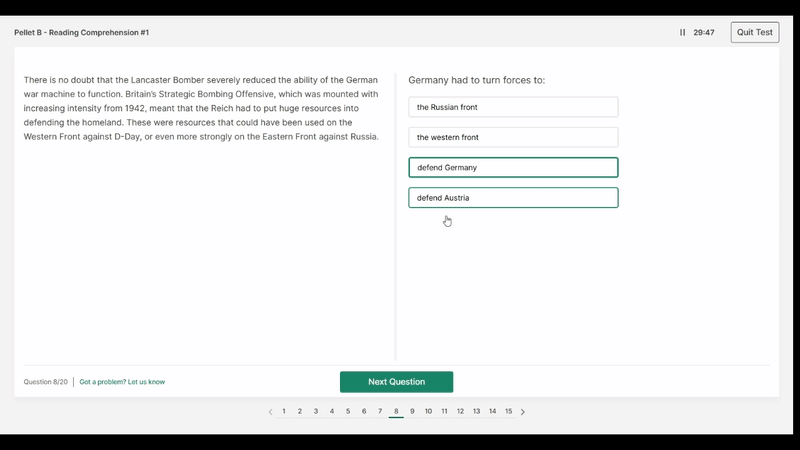Start Your Texas Police Career With Confidence
Every Texas police department uses its own written exam — whether it’s the FrontLine, NPOST, NCJOSI 2, NDRT, or NPST — to find the best candidates for the job. With JobTestPrep’s Texas Police Exam Prep, you’ll get realistic practice tests, sample questions, and expert tips tailored to your specific department’s exam. Prepare smarter, master the key skills every officer needs, and take the first step toward proudly serving your Texas community.
The Texas Police Test PrepPack includes:
- Full cover for all test sections you will face, including reading comprehension, writing skills, logical reasoning, numerical, cognitive abilities and personality profiling.
- Detailed study guides, providing you with essential information about test format, solving strategy and tips.
-
Targeted practice exercises – focused drills for key skills.
-
Realistic interface & complexity – mirrors the actual Solve Game experience.
-
Unlimited retakes during your subscription.

- Personality Practice Tests
- Written Skills Practice Tests
- Reading Comprehension Practice Tests
- Math Practice Tests
- Reasoning Practice Tests
- Cognitive Ability Practice Tests
Discover What's Inside the Texas Police Officer PrepPack
Who Are We?
FAQs
- Thorough study guide and 3 practice tests

Taken from our Texas Police Officer PrepPack
- 19 practice tests, covering essential topics reequired for proper written communication:
- Vocabulary
- Spelling
- Clarity
- Paragrpah Organization

Taken from our Texas Police Officer PrepPack
- 4 basic math and word problems practice tests
- 4 basic math study guides to make sure you do not waste precious time on basic calculations, and can focus on what really matters.

Taken from our Texas Police Officer PrepPack
- 12 practice tests, covering inductive & deductive reasoning, problem solving, problem sensitivity and information ordering.
- 2 logical reasoning study guides

Taken from our Texas Police Officer PrepPack
- 14 cognitive ability practice tests
- 2 Following Directions and Memorization study guides

Taken from our Texas Police Officer PrepPack







